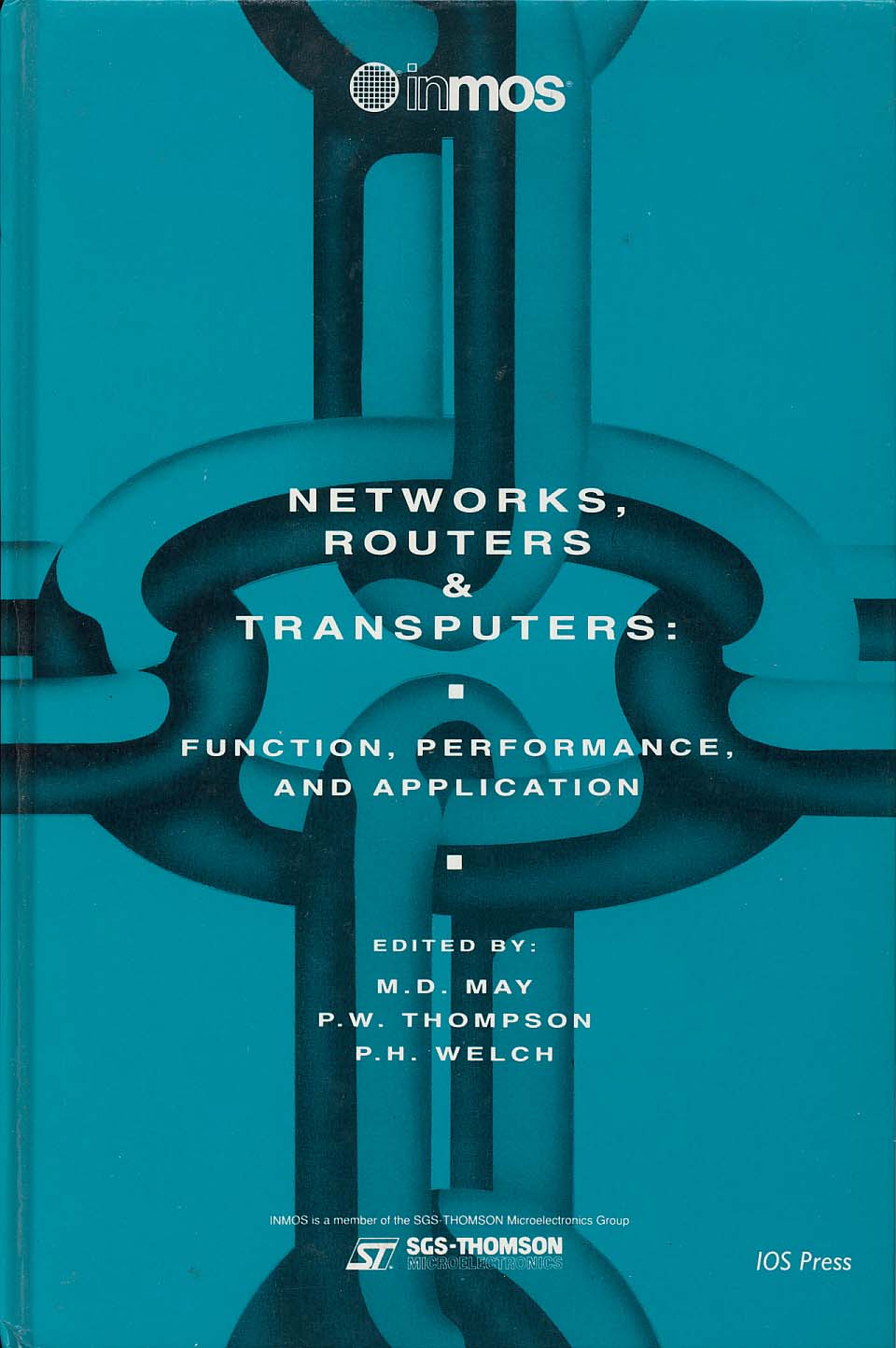"…sequential computers are approaching a fundamental physical
limit on their potential power. Such a limit is the speed of light…"
![]()
Networks, Routers and Transputers:
Function, Performance and Application
Edited by: M.D. May, P.W. Thompson and P.H. Welch

|
High speed networks are an essential part of public and private telephone and computer communications systems. An important new development is the use of networks within electronic systems to form the connections between boards, chips and even the subsystems of a chip. This trend will continue over the 1990s, with networks becoming the preferred technology for system interconnection.
Two important technological advances have fuelled the development of interconnection networks. First, it has proved possible to design high-speed links able to operate reliably between the terminal pins of VLSI chips. Second, high levels of component integration permit the construction of VLSI routers which dynamically route messages via their links. These same two advances have allowed the development of embedded VLSI computers to provide functions such as network management and data conversion.
Networks built from VLSI routers have important properties for system designers. They can provide high data throughput and low delay; they are scalable up to very large numbers of terminals; and they can support communication on all of their terminals at the same time. In addition, the network links require only a small number of connection points on chips and circuit boards. The most complex routing problems are moved to the place where they can be done most easily and economically - within the VLSI routers.
The first half of this book brings together a collection of topics in the construction of communication networks. The first chapters are concerned with the technologies for network construction. They cover the design of networks in terms of standard links and VLSI routing chips, together with those aspects of the transputer which are directly relevant to its use for embedded network computing functions. Two chapters cover performance modeling of links and networks, showing the factors which must be taken into consideration in network design.
The second half of the book brings together a collection of topics in the application of communication networks. These include the design of interconnection networks for high-performance parallel computers, and the design of parallel database systems. The final chapters discuss the construction of large-scale networks which meet the emerging ATM protocol standards for public and private communications systems.
The 1990s will see the progressive integration of computing and communications: networks will connect computers; computers will be embedded within networks; networks will be embedded within computers. Thus this book is intended for all those involved in the design of the next generation of computing and communications systems.
February 1993
Work on this subject has been supported under various ESPRIT projects, in particular `Parallel Universal Message-passing Architecture' (PUMA, P2701), and more recently also under the `General Purpose MIMD' (P5404) project. The assistance of the EC is gratefully acknowledged.
|
[Introduction.pdf - 57K]
|
[Abstracts.pdf - 33K]
|
[Chapter1.pdf - 110K]
|
[Chapter2.pdf - 147K]
|
[Chapter3.pdf - 161K]
|
[Chapter4.pdf - 156K]
|
[Chapter5.pdf - 153K]
|
[Chapter6.pdf - 302K]
|
[Chapter7.pdf - 94K]
|
[Chapter8.pdf - 81K]
|
[Chapter9.pdf - 105K]
|
[Chapter10.pdf - 960K]
|
[Chapter11.pdf - 137K]
|
[Appendices.pdf - 180K]
Enquires to rmeenaks@olf.com